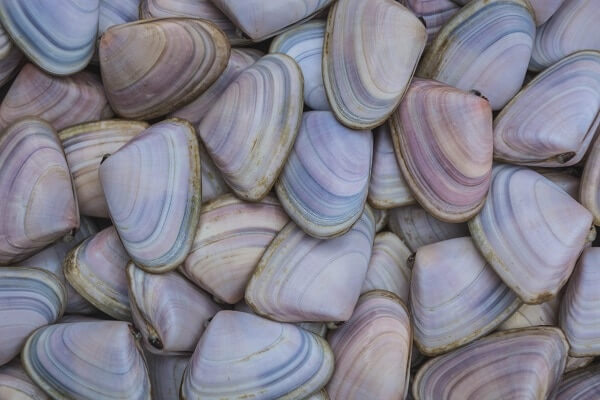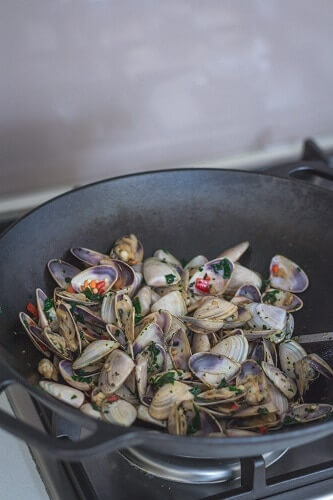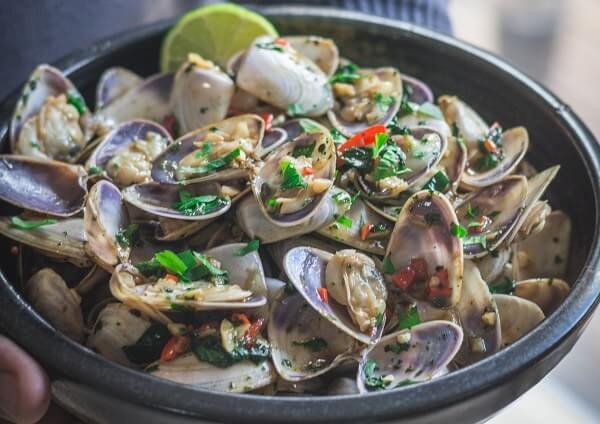Pipis are small, edible saltwater clams that are endemic to Australia. They are also known as Coorong cockle or Goolwa pipi or kuti (Ngarrindjeri name) in South Australia, and sometimes referred to as eugarie in some parts of Queensland.
The taste is quite similar to that of clams but slightly sweeter, hence any recipe that uses clams can be used to prepare pipis too.
Pipis are available for purchase at most seafood stores and markets. But the most important thing to remember while buying pipis is to look for the MSC blue fish tick. This ensures that the pipis are certified sustainable and come from a fishery that has been assessed and adheres to the MSC Fisheries Standard.
The most sustainable way to collect pipis are to collect by hand using rakes, a technique that has been referred to as ‘pipi shuffle’. This method keeps technology at bay and ensures that the species and its surrounding nature is protected.
Another advantage of buying from a premium brand is that the pipis are super fresh and clean of grit and sand, which is very common when buying from many seafood sellers. So, you don’t have to waste much time cleaning the pipis at home.
If you are buying from a fishmonger, make sure to ask if the pipis have been purged i.e., stored in aerated saltwater to remove the grit and sand. If not, then you must do the process yourself. Add 30gms salt/litre cold water (adjust based on the quantity of pipis you have) and place the pipis or clams inside for a few hours, preferably overnight. Do not refrigerate as the pipis will close up the shells and not allow the sand and grit to purge out. Instead cover and place in a cool spot of the house.

Another important thing to remember is that it’s best to discard the pipis that have not opened after cooking. Better to be safe than sorry!
The golden rule while cooking pipis is to keep it simple – just a touch of flavour to let the pipis shine.
The classic way of enjoying pipis is with butter, garlic, a splash of white wine and plenty of parsley to finish off. But we spice things up a bit in this Taiwanese recipe, without overpowering the sweetness of the pipis.
There are very few ingredients in use here, but the combination of fresh ginger, garlic, chillies and herbs works magic to elevate the flavour of the pipis. Fingerlick’n good!
And of course, don’t forget some good quality bread on the side to mop up those juices. Perfect any time of the year but most enjoyable on warm summer afternoons with a couple of chilled beers to accompany.
Taiwanese-style Pipis
Ingredients
1 kg pipis
75ml Shao xing rice wine
6gms fresh ginger; sliced thinly
For the sauce
60ml oyster sauce
5gms raw sugar
½ tsp freshly milled black pepper
75ml pipis cooking liquid
60gms spring onions (green part); finely chopped
1 long red chilli (medium heat variety); finely chopped with seeds
35gms fresh coriander (both stalks and leaves); finely chopped
40gms garlic; finely chopped
20ml sesame oil
30ml vegetable oil
Salt, to season
Lemon wedges

Method
- Heat a large saucepan and add the pipis, ginger and rice wine. Cover and cook for 2-3 minutes and shake periodically. Remove the pipis as they pop open (all the pipis will not pop open at the same time so keep removing as they do).
- Remove the ginger slices and reserve 75 ml of the cooking liquid.
- In a bowl, mix all the sauce ingredients together.
- Heat vegetable and sesame oil in a large pan or wok. Add half of the chopped garlic and fry on low heat till golden brown and toasty (take care not to burn).
- Then add the remaining chopped garlic along with the prepared sauce; bring to boil.
- Add the cooked pipis along with the rest of the ingredients and toss well to combine. Season with salt only after tasting.
- Serve immediately with lemon wedges.

READ ALSO: Egg Curry, Chettinad-style





